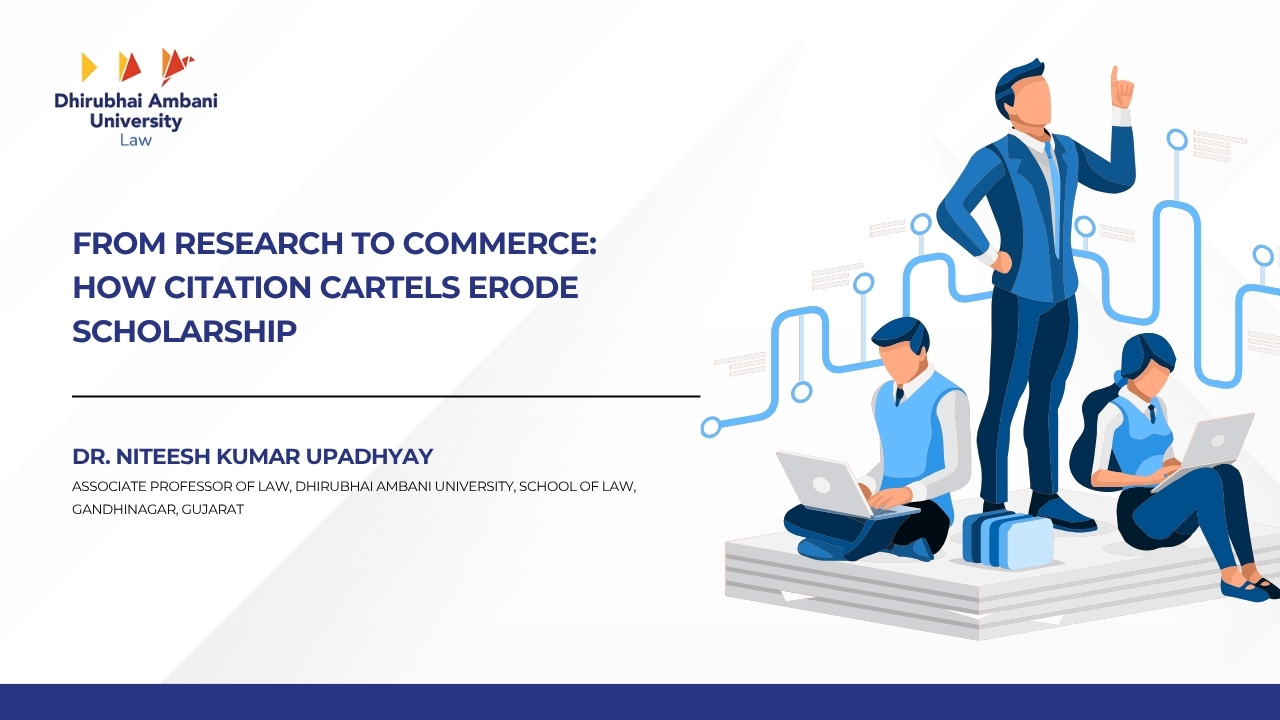
By Dr. Niteesh Kumar Upadhyay, Associate Professor of Law, Dhirubhai Ambani University, School of Law, Gandhinagar, Gujarat
Citation cartels in India have become a growing concern. With NAAC, NIRF, and QS rankings putting universities and colleges into a kind of race, faculty members and researchers are under constant pressure not just to publish, but to gather citations. Terms like H-index, i10, i20, which hardly anyone knew five years ago, are now buzzwords in every academic corridor. Survival in academia today means publishing in Scopus, Web of Science, or ABDC journals.
Between 2018 and 2020, it was enough to publish in Scopus or ABDC-listed journals. Then, from 2020 to 2023, the focus shifted to Q1 and Q2 journals only. Now, the emphasis has moved further from publication to the number of citations. And this is where citation cartels have stepped in.
Here’s how they work: they openly ask for money in exchange for citations. For example, around 20 Google Scholar citations can cost about ₹8,000, while 20 Scopus citations may go up to ₹20,000. Bulk buying, of course, reduces the price. Some authors even add lengthy lists of irrelevant references, charging a substantial amount, so that a paper on constitutional law may end up being cited in a paper on solid-state engineering. This has nothing to do with genuine scholarship; it’s all about gaming the system.
The result? The entire purpose of citation is being diluted. Paid citations are being promoted, in some cases, even by institutions themselves. Incentives for citations have become common practice. But this systematic, back-and-forth referencing is not just unethical—it’s an attack on the very essence of scholarly trust. It erodes the intellectual marketplace that drives human understanding forward. Some paper mills and agencies now go a step further; they even promise backdated publications and citations to artificially boost the reputation of an academic writer. Buying citations has become incredibly easy, with payments often done through UPI to keep the transactions almost unrecorded. What we are looking at is a million-dollar industry worldwide, and it is slowly but steadily tightening its grip on Indian academia.
Some professors proudly claim on LinkedIn that they have reached 30,000 citations within just five years. But the reality is quite different. everyone knows they haven’t made any substantial contribution to knowledge in their field, nor have they produced any novel or groundbreaking research. Even if you read their papers, you won’t find any new concepts; it’s mostly just a repetition of already available ideas from online sources.
What’s the way out? Colleges and universities must establish ethics boards to carefully review citations and references in research articles. If someone is found to be blatantly misusing citations by paying for them, they should be reprimanded and their incentives withheld. This isn’t just about enforcing ethics; it’s about restoring the credibility of Indian research. Due to these unethical practices, Indian academic work is often overlooked globally, not read or cited by serious researchers and scholars. Cleaning up this mess will help improve both our academic integrity and the value of Indian research.
